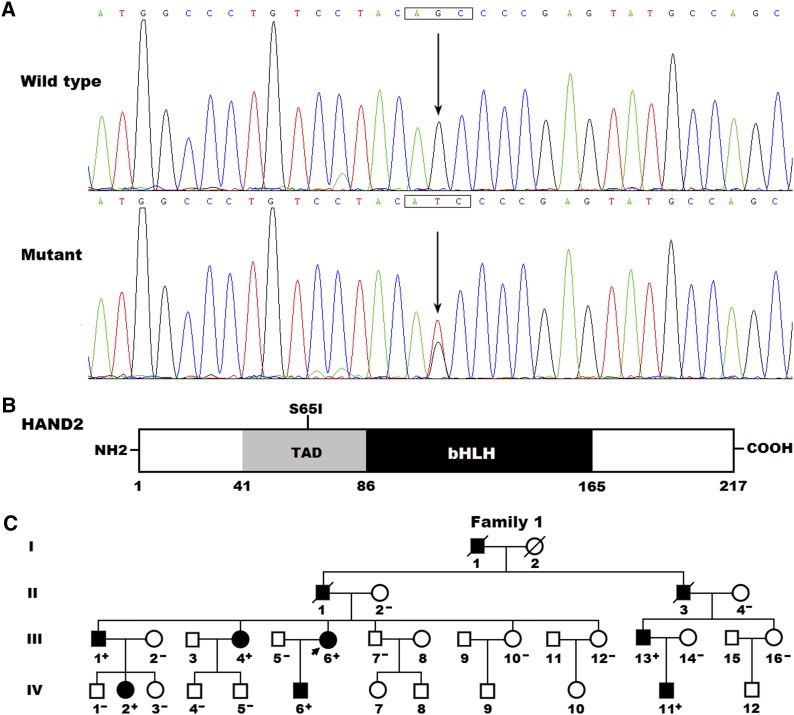Figure 1.
A novel HAND2 mutation associated with congenital heart disease. (A) Sequence electropherograms showing the heterozygous HAND2 mutation as well as its wild-type control. The arrow indicates the heterozygous nucleotides of G/T in the proband (mutant), or the homozygous nucleotides of G/G in a control individual (wild type). The rectangle marks the nucleotides comprising a codon of HAND2. (B) A schematic diagram depicting the structural domains of the HAND2 protein. The mutation detected in a family with congenital heart disease (CHD) is marked above the structural domains. NH2, amino-terminus; TAD, transcriptional activation domain; bHLH, basic helix-loop-helix; COOH, carboxyl-terminus. (C) A family with CHD and a HAND2 mutation. The family was designated as family 1. Family members are identified by generations and numbers. Square, male family member; circle, female member; symbol with a slash, deceased member; closed symbol, affected member; open symbol, unaffected member; arrow, proband; “+”, carrier of the mutation; and “–”, noncarrier.

